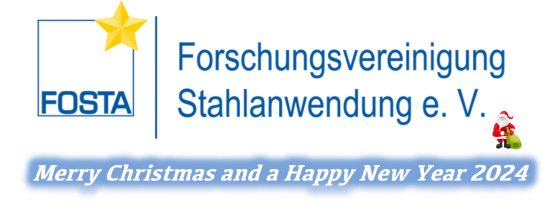|

Dear Sir or Madam,
Today we would like to draw your attention to upcoming events and inform you about newly published FOSTA final reports from the focal areas of mobility, construction as well as plant and mechanical engineering. You can find these and all other FOSTA reports in the stahldaten.de store.
We wish you interesting reading, happy Christmas holidays and a good start into the new year 2024.
Your FOSTA team
| 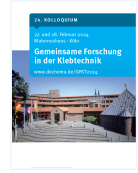
27. und 28. Februar 2024
24. Kolloquium: Gemeinsame Forschung in der Klebtechnik
The colloquium "Joint Research in Adhesive Bonding Technology" has been the forum for adhesive developers, manufacturers and users for many years. Overview lectures from the industry, presentations by adhesive manufacturers and lectures on joint industrial research projects provide a comprehensive picture of the current state of research and application.
The Joint Committee Adhesive Bonding Technology, consisting of the four AiF research associations DECHEMA, DVS, FOSTA and iVTH, and its co-operation partners have been offering scientists, developers, manufacturers and users the opportunity to gain an overview of current research and to enter into dialogue with each other for over 20 years with this colloquium.
Venue:
Maternushaus Köln
Kardinal-Frings-Str. 1-3
50668 Köln
Detailed information on the colloquium can be found on the following website.
| 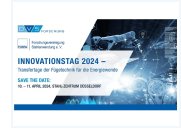
5. und 6. März 2024
24. DASt-Forschungskolloquium
The 24th DASt Research Colloquium, a renowned forum for young scientists from the fields of steel, metal and composite construction, will take place in Munich in March 2024. This event offers an excellent opportunity to present your own research work to a wide-ranging and interested specialist audience.
Participation in the colloquium enables an intensive scientific exchange with professors and researchers, which can provide new perspectives and impulses for future research projects. In addition, the colloquium supports the establishment of contacts and promotes interdisciplinary scientific co-operation.
Venue:
Oskar von Miller Forum
Oskar-von-Miller-Ring 25
80333 München
Detailed information on registration and the programme can be found on the following website.
| 10. und 11. April 2024
Innovationstag 2024 - Transfertage der Fügetechnik für die Energiewende
The Research Association for Welding and Allied Processes of DVS and FOSTA - Research Association for Steel Application are cooperating for a successful transfer of results. The Innovation Day 2024 is the starting point for an annual series of events in which current research results of joint research in joining technology are presented in a condensed and industry-oriented manner.
The Innovation Day 2024 invites interested companies and research institutions to the STAHL-ZENTRUM in Düsseldorf on April 10 and 11, 2024 for a professional dialog on the topic of "Joining technology for the energy transition". The focus will be on "Energy conversion", "Additive manufacturing", "Sustainability", "Large structures", "Quality and verification", "Hydrogen technologies" and "Wind energy".
Venue:
Stahl-Zentrum
Sohnstraße 65
40237 Düsseldorf
Further information on the programme will follow shortly on the following website.
| P 1348 – Methods Development for Failure Analysis of Pre-Damaged Adhesive Joints due to Cure in Mixed-Material-Design (IGF-No 20665 N)
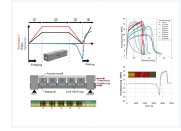
The advancement of metallic hybrid construction for lighter and more efficient products requires new approaches in designing hybrid structures with diverse materials. Particularly, adhesive connections with thermosetting, structural 1-component adhesives based on epoxy resin play a crucial role, as they cure at high temperatures during the manufacturing process. The varying thermal expansion coefficients of the joining partners result in mechanical stress on the adhesive layer, ranging from changes in material properties to damage. Upon subsequent loading, the adhesive connection exhibits not only pre-damage but also a change in strength depending on the deformation history during the manufacturing process.
The aim of this project is to develop a method for failure analysis of structural adhesive connections in metallic hybrid structures under crash loading with pre-damage due to curing. The influence of the manufacturing process on the mechanical properties of the adhesive layer is taken into account. To enable precise design of metallic lightweight structures, the project aims for an improved predictive accuracy in crash analysis. For this purpose, an experimental testing methodology is developed to characterize the relevant material properties during both the manufacturing process and subsequent loading. The insights gained contribute to the further development of the Toughened Adhesive Polymer (TAPO) model, incorporating pre-damage and the influence of the manufacturing process in crash calculations. This provides engineering firms, often small and medium-sized enterprises (SMEs), with a tool for optimal design of joined structures. more information
|
| P 1389 – Improved fatigue resitance of welds in wind energy by deep rolling (IGF-No 20626 N)
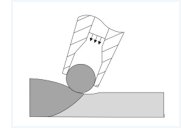
To achieve energy policy goals, the expansion of renewable energy sources is essential in Germany. Particularly, the expansion of wind energy will play a crucial role. In the future, offshore wind energy installations are expected to make a significant contribution. To promote this expansion, technical innovations are necessary, especially in the cost-effective construction of welded steel structures, such as Monopiles.
In this project, the established roller-compaction process from mechanical engineering was applied to welded rough plates to achieve material savings while maintaining fatigue strength. This process is particularly suitable for the automated manufacturing of Monopiles. The focus was on the properties induced by the roller-compaction process in terms of geometry, surface, and edge zone. Specifically, the residual stress state influencing the fatigue strength of steel components was thoroughly examined. The impacts of the roller-compaction process on the residual stress state of welded samples were quantified, and permissible stresses were determined to ensure the stability of the residual stress state.
The overarching goal of the project, to quantify the increase in fatigue strength of welded steel plates through the roller-compaction process, was successfully demonstrated through experimental investigations.
more information
|
| P 1379 – Determination of forming limit curves at elevated temperatures (IGF-No 20577 BR)
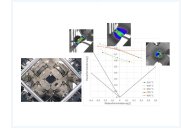
The aim of the project was to develop a new method for the frictionless determination of forming limit curves for hot forming processes. After extensive research, test concepts and specimen geometries were identified. Using an existing biaxial tensile testing machine, new specimen shapes were developed with the aid of numerical simulations, which reflect the three essential points of FLC with the uniaxial tensile load, the plane strain load and the equibiaxial tensile load. Two manganese-boron steels, 22MnB5 and 34MnB5, were selected and their temperature- and strain rate-dependent material behaviour was determined. The numerical design of the testing process was carried out for various loads and the biaxial tensile testing machine was adapted. Experimental investigations to determine friction-free temperature-dependent forming limit curves were carried out and verified experimentally and numerically on the demonstrator component "B-pillar base". The research results are particularly important for companies in the toolmaking and automotive industries and their suppliers, as they provide more precise characteristic values for the numerical design of hot sheet metal forming processes. more information
|
| P 1318 – Increasing material and resource efficiency in case hardening through stress-controlled carbon and hardness profiles (IGF-No 51 EWBR)
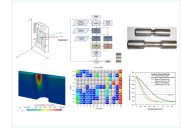
The research project developed a concept for the numerical determination of stress-controlled target and process variables for the thermochemical case hardening process. The concept takes into account the actual stress state in the failure-critical area of steel components. Target values for case hardening are defined for this area and process parameters are generated taking the component geometry into account. This enables a significant reduction in the required carburising and case hardening depths as well as the overall process times. The validation on shaft samples made of 16MnCrS5 case-hardening steel with various mould notches showed a considerable time saving of 53% to 61% compared to conventional case hardening. Vibration tests confirmed that stress-controlled case hardening has no negative effects on the load-bearing capacity of the shaft samples. more information
|
| P 1227 – Joining of Duplex Stainless Steels using the Laser-submerged arc hybrid welding (IGF-No 20736 N)
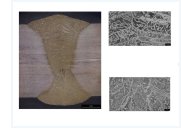
The aim of the research project was the reliable and efficient production of high-quality weld seams on duplex steel 1.4462 (up to 30 mm thick) using laser beam-UP hybrid welding. During the development of the welding process, variations of parameters such as laser beam power, feed speed and oscillation amplitude were carried out. The welded joints were evaluated on the basis of standards and regulations with regard to metallurgical and mechanical properties. Cross-sections, EDX analyses, microstructural analyses, Charpy impact tests, tensile tests and corrosion tests were used to qualify the weld seams. As a result, efficient high-performance welding processes with a laser beam power of up to 16 kW and a submerged arc power of 15 kW at a welding speed of up to 1.0 m/min were achieved. The welded joints produced largely fulfil the required austenite content of 30 %, a required impact energy of at least 40 J at a test temperature of -40 °C and demonstrate corrosion resistance in line with requirements. more information
|
|
|
|

